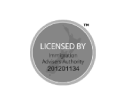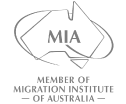Australia’s skilled migration program offers a structured pathway to permanent residency (PR) through the Subclass 491 visa, transitioning to the Subclass 191 visa. While financial requirements may seem daunting, strategic planning ensures compliance with evolving regulations. Recent policy shifts highlight the importance of proactive financial management.
Upcoming Income Threshold Changes
From 1 July 2025, skilled visa income thresholds will increase by 4.6% across multiple visa categories. This adjustment aligns with the Average Weekly Ordinary Time Earnings (AWOTE) indexation[1][3][5]:
- Core Skills Income Threshold rises from AUD$73,150 to $76,515 (affecting 482 and 186 visas)
- Specialist Skills Threshold increases from $135,000 to $141,210 (Specialist Skills 482 stream)
- Temporary Skilled Migration Threshold jumps from $73,150 to $76,515 (494 regional visas)[1][3][5]
These changes apply only to nominations lodged after 1 July 2025, exempting existing visa holders[1][3].
Subclass 191 Financial Requirements
Unlike other skilled visas, the Subclass 191 has no legislated minimum income threshold[2][4]. However, applicants must provide three consecutive years of Australian Taxation Office (ATO) Notices of Assessment proving:
- Continuous economic participation during provisional visa period
- Genuine tax contributions to Australia’s economy
- Compliance with Australian tax laws[2][4]
Strategic Financial Planning
- Income Documentation Strategies
- Maintain employment records showing consistent income generation
- Use salary packaging to optimize taxable income reporting
- Track regional employment (required for 491 compliance)
- Threshold Buffer Planning
- Aim for income 15-20% above current thresholds to accommodate future increases
- Monitor AWOTE adjustments annually (typically July)
- Consider specialist skills pathways if exceeding $141,210[1][3]
- Regional Compliance Integration
- Document residency in designated regional areas (condition 8579)
- Retain employment contracts showing regional work locations
- Preserve education/enrollment records for family members[2]
Critical Compliance Considerations
Visa condition violations jeopardize 191 eligibility. Key requirements include:
- Residing in designated regional areas throughout provisional visa period
- Notifying address changes within 14 days (condition 8578)
- Meeting all health and character requirements[2]
Financial records must demonstrate authentic economic activity rather than manufactured income streams. The ATO scrutinizes tax returns for:
- Consistency with industry standards
- Alignment with employment contracts
- Verification through PAYG summaries and bank statements[2][4]
Long-Term Pathway Planning
Successful applicants combine financial preparedness with regulatory awareness:
- Year 1: Establish regional employment meeting threshold benchmarks
- Year 2: Optimize income documentation and tax compliance
- Year 3: Prepare comprehensive evidence portfolio before 191 application
Regional development agencies like the RDA Riverina offer support services for skilled migrants adjusting to regional economic conditions[3].
Future-Proofing Your Application
Anticipate further threshold adjustments by:
- Monitoring Home Affairs policy updates
- Consulting registered migration agents
- Joining skilled migrant communities for real-time alerts
While the 191 pathway demands meticulous financial documentation, its lack of prescribed income minimums offers flexibility absent in other skilled visas. By combining regional commitment with transparent income reporting, applicants successfully navigate this permanent residency pathway.










